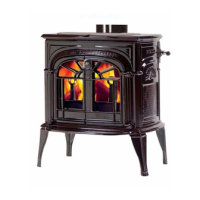
Do you have a question about the Vermont Castings Madison 1655 and is the answer not in the manual?
| Category | Wood stove |
|---|---|
| Model | Madison 1655 |
| Fuel Type | Wood |
| Max Log Length | 18 inches |
| Weight | 400 lbs |
| EPA Certified | Yes |
| Flue Size | 6 inches |
| Finish | Enamel |
Critical safety warnings about installation, operation, and maintenance to prevent house fires and injury.
Recommends hearth products be installed by NFI or WETT certified professionals.
Lists optional accessories available for the stove, such as heat shield kits.
Warns about chemicals in fuel and combustion products known to cause cancer and birth defects.
Details requirements for connecting the stove to masonry or prefabricated chimneys.
Specific inspection and repair guidelines for existing or new masonry chimneys.
Instructions for connecting single-wall connectors to prefabricated chimneys using adapters.
Guidelines for attaching single-wall connectors to masonry chimneys, including thimble use.
Requirements and installation notes for using double-wall chimney connectors.
Step-by-step instructions for assembling and securing single-wall chimney connectors.
Details NFPA guidelines for passing chimney connectors through combustible walls in the US.
Describes alternative NFPA-approved methods for wall pass-throughs using special components.
Illustrates common designs for wall shields to achieve reduced clearances to combustible materials.
Shows noncombustible ceiling framing and dimensions for alcove construction.
Instructions for removing shipping materials and inspecting the stove for damage or missing parts.
Step-by-step guide to attaching the stove legs using hex head bolts and leg levellers.
Details on mounting the #1892 Bottom Heat Shield to the stove bottom for floor protection.
Guidance on how to remove and store the door handle when not in use to prevent it from getting hot.
Instructions for installing the rear heat shield on specific models (1655-1659).
Instructions for attaching the outside air adapter when the rear heat shield is installed.
Steps for installing the outside air adapter on stoves without a rear heat shield.
Explains the stove's combustion control via primary and secondary air delivery systems.
Emphasizes using only natural wood, properly seasoned, for optimal performance and safety.
Guides users on adjusting air controls based on fuel, desired heat, and chimney draft.
Advises on performing initial break-in fires to gradually adjust cast iron plates to temperature changes.
Instructions for dusting and touching up the stove's painted cast iron exterior.
Guidance on cleaning spills and stains from porcelain enamel surfaces using mild agents.
Procedure for cleaning carbon deposits and ash residue from the stove's glass panel.
Steps for safely replacing the glass panel, including gasket and retainer clip procedures.
Detailed instructions for replacing worn or compressed fiberglass gaskets for a proper seal.
Explains creosote formation, risks of chimney fires, and inspection/cleaning schedules.
Recommended yearly tasks including cleaning, inspection, and replacement of chimney components.
Discusses disadvantages of masonry chimneys, like heat absorption and slow draft.
Describes the advantages of steel chimneys, such as faster warming and better performance.
Explains why locating the chimney inside the house is preferred for better draft.
Details the importance of correct flue sizing for controlled-combustion appliances.
Advises on optimal flue pipe and chimney layouts for efficient draft and performance.
Outlines the 3-year warranty for the woodburning stove, excluding specific components.
Details the 1-year warranty for specific parts like thermostat, handles, glass, cement, and gasketing.
Lists conditions and actions that void the warranty, such as misuse or improper installation.
Provides instructions for customers on how to get warranty service or repairs.
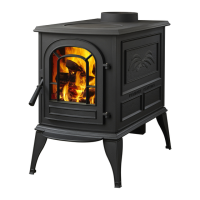
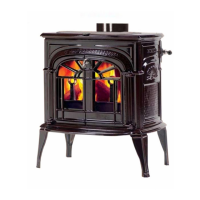

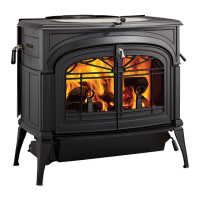
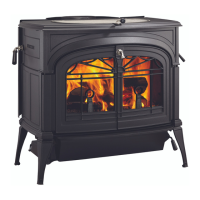
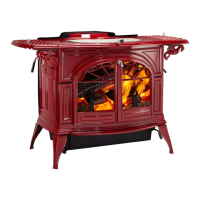


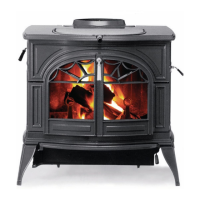
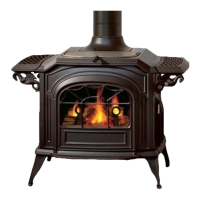
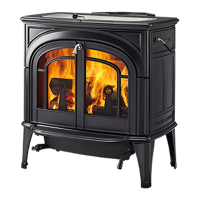
